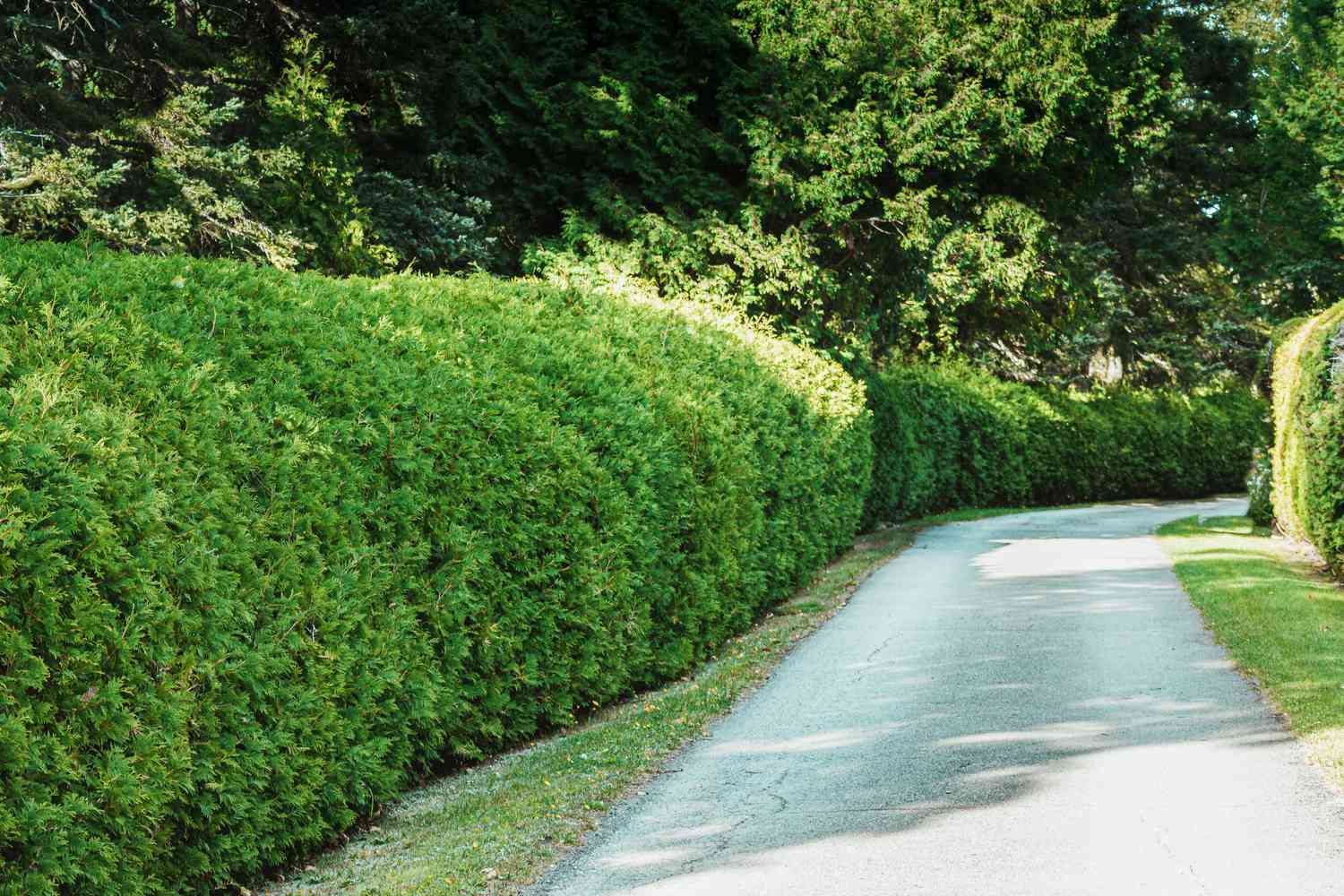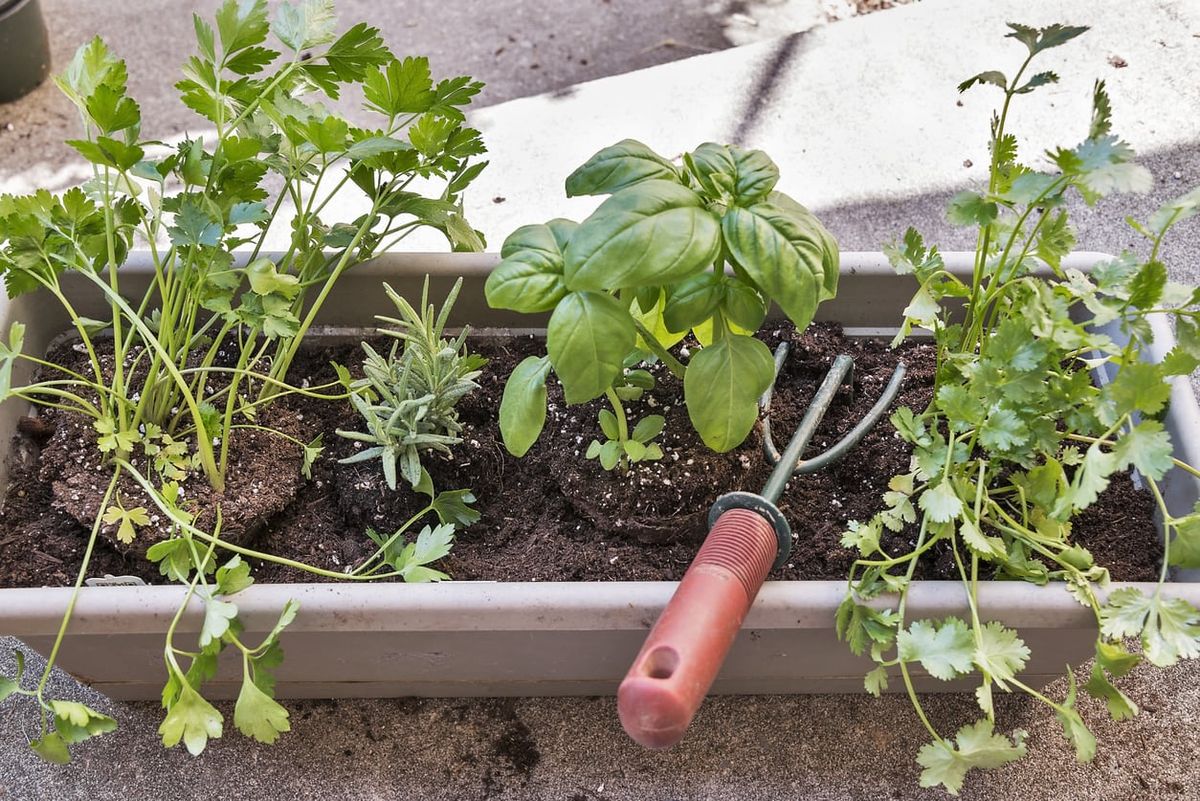Home>Garden Design>Planning Your Garden>How Close To The Property Line Can I Plant Shrubs


Planning Your Garden
How Close To The Property Line Can I Plant Shrubs
Modified: January 22, 2024
Planning your garden and wondering how close to the property line you can plant shrubs? Find out the regulations and guidelines to ensure your garden design complies with local laws.
(Many of the links in this article redirect to a specific reviewed product. Your purchase of these products through affiliate links helps to generate commission for Chicagolandgardening.com, at no extra cost. Learn more)
Table of Contents
Introduction
Planning your garden involves considering various factors, including the location of your property and the boundaries that define it. If you’re wondering how close to the property line you can plant shrubs, you’re not alone. Many gardeners have questions about the restrictions and regulations that govern planting near property lines. Understanding these guidelines is crucial to ensure you don’t violate any rules or create conflicts with your neighbors.
In this article, we will explore the topic of planting shrubs near property lines and provide you with valuable insights to help you navigate this aspect of garden planning. We will discuss the definition of property lines, neighborhood restrictions, local zoning laws, common setback requirements, exceptions and variances, considerations for planting near property lines, choosing the right shrubs, and maintaining them effectively.
By gaining a clear understanding of the rules and guidelines, you’ll be armed with the knowledge needed to create a beautiful garden that respects the boundaries of your property and maintains a harmonious relationship with your neighbors.
What is the property line?
The property line is the boundary or dividing line that separates one property from another. It defines the extent of your land ownership and plays a crucial role in determining your rights and responsibilities as a property owner. Property lines are typically established and recorded during the land surveying process.
Understanding the location of your property lines is important when it comes to planting shrubs or making any changes to your landscape. Planting too close to the property line can lead to disputes with your neighbors or even legal consequences if the plants encroach onto their property.
Locating your property lines can be done by referring to your property’s deed, survey maps, or by hiring a professional surveyor. These documents will provide precise measurements and boundary markers to help you identify the exact location of your property lines. It’s important to note that property lines may not always follow a straight line and can be affected by factors such as easements, shared driveways, or irregularly shaped lots.
Once you have a clear understanding of your property lines, you can proceed with planning your garden and determining how close you can plant shrubs to the boundaries.
Neighborhood restrictions and regulations
When it comes to planting shrubs near the property line, it’s essential to be aware of any neighborhood restrictions or regulations that may be in place. These restrictions can vary from one community to another and are typically implemented to maintain the aesthetic appeal and harmony of the neighborhood.
Some neighborhoods may have homeowners’ associations (HOAs) that enforce rules and guidelines regarding landscaping, including planting distances from property lines. These rules are usually outlined in the HOA’s bylaws or covenants, conditions, and restrictions (CC&Rs). It is important to review these documents carefully to ensure compliance with any planting restrictions.
In addition to HOA regulations, local municipalities may have their own ordinances related to planting near property lines. These ordinances may define setback requirements, which specify the minimum distance between structures or plantings and the property line. Setbacks can vary depending on factors such as the type of property, zoning district, or the presence of easements or utility lines.
It’s important to consult your local city or county planning department to understand the specific setback regulations and any other requirements related to planting near property lines. They can provide you with the necessary information and ensure that your landscaping plans are in compliance with local regulations.
By adhering to neighborhood restrictions and regulations, you can maintain a harmonious relationship with your neighbors and avoid potential conflicts or legal issues that may arise due to non-compliance.
Local zoning laws
Local zoning laws play a significant role in determining how close you can plant shrubs to your property line. These laws are established by local government entities, such as city or county zoning departments, to regulate land use and development within their jurisdiction.
Zoning laws typically divide areas into specific zones with different permitted uses and regulations. Each zone may have specific requirements regarding setbacks, building heights, lot coverage, and landscaping. These regulations aim to promote safety, maintain property values, and ensure the overall well-being of the community.
When it comes to planting shrubs near property lines, you need to be aware of the zoning laws in your area. These laws will specify the minimum distance you must maintain between your plantings and the property line.
For example, residential zones might require a setback of 5-10 feet from the property line for planting shrubs. Commercial or industrial zones might have different setback requirements, depending on the specific zone and intended use of the property.
It’s crucial to consult your local zoning department or review the zoning regulations applicable to your property to determine the setback requirements for planting shrubs near the property line. These regulations will provide you with the necessary information to ensure compliance with local laws and avoid potential fines or penalties.
By familiarizing yourself with the local zoning laws, you can confidently plan your garden and plant shrubs in a manner that aligns with the regulations set forth by your municipality.
Common setback requirements
Setback requirements refer to the minimum distance that must be maintained between structures or plantings and the property line. These requirements vary depending on the specific zoning designation and the regulations of the local jurisdiction. While setback requirements can differ, there are some common guidelines that many areas follow regarding planting shrubs near property lines.
In residential zones, setback requirements for planting shrubs typically range from 5 to 10 feet from the property line. This distance allows for proper maintenance and easy access for neighboring properties. It also helps prevent potential conflicts or disputes between neighbors.
Commercial or industrial zones may have different setback requirements depending on the specific zone and intended use of the property. These setback requirements might be more stringent to accommodate factors such as parking lots, driveways, and loading areas. It’s important to consult local zoning regulations to understand the specific setback requirements for planting shrubs in these zones.
In some cases, there may be no specific setback requirements for planting shrubs near property lines. However, it’s still crucial to consider the impact on your neighbors before proceeding. Planting shrubs too close to the property line can lead to issues such as shading, root intrusion, or obstruction of views. It’s always a good practice to maintain a reasonable distance to ensure a harmonious relationship with your neighbors.
Additionally, setbacks can be affected by factors such as easements or utility lines. These may have their own regulations and restrictions that must be taken into account when planting near property lines. It’s important to be aware of any easements or utility line requirements and avoid planting shrubs in these areas to prevent potential conflicts or issues.
Remember, setback requirements can vary, and it’s essential to consult local zoning regulations or seek guidance from the appropriate authorities to ensure compliance. By understanding and adhering to setback requirements, you can create a well-planned garden that respects the boundaries of your property while maintaining good neighborly relations.
Exceptions and variances
While setback requirements dictate the minimum distance between structures or plantings and the property line, there are instances where exceptions or variances may be granted. These exceptions allow property owners to deviate from the standard setback requirements based on specific circumstances or considerations.
Obtaining an exception or variance typically involves going through a formal application process and may require approval from local authorities, such as the zoning board or planning department. It’s important to note that the criteria for granting exceptions or variances can vary between jurisdictions.
Common reasons for exceptions or variances include unique property characteristics, topography constraints, or the need to preserve existing trees or landscape features. For example, if your property has an irregular shape or is located on a corner lot, you may be eligible for a setback reduction to accommodate the existing landscape more effectively.
In some cases, neighboring property owners may have the opportunity to provide input or voice concerns during the exception or variance application process. This allows for a fair and transparent evaluation of the requested deviation from setback requirements.
If you believe your circumstances warrant an exception or variance from the standard setback requirements, it’s recommended to consult local authorities or zoning officials. They can guide you through the application process and provide you with the necessary information and requirements to pursue an exception or variance.
It’s important to note that obtaining an exception or variance is not guaranteed and may require presenting a convincing case that demonstrates why the deviation is necessary and will not negatively impact neighboring properties or the overall community.
By familiarizing yourself with the exceptions and variance process in your local jurisdiction and following the necessary procedures, you can explore the possibility of planting shrubs near the property line in accordance with established regulations and secure any necessary approvals.
Considerations for planting near property lines
When deciding to plant shrubs near property lines, there are several important considerations to keep in mind. These factors will not only help you comply with regulations and maintain good neighborly relations but also ensure the health and vitality of your plants.
1. Height and density: Consider the mature height and density of the shrubs you choose. Opt for varieties that will not grow too tall or dense, potentially obstructing views, sunlight, or air circulation for your neighbors.
2. Root systems: Be mindful of the root systems of your chosen shrubs. Some plants have aggressive or spreading roots that could cause damage to neighboring properties or infrastructure. Avoid planting these types of shrubs near the property line to prevent potential issues.
3. Maintenance and care: Consider the maintenance requirements of the shrubs you select. Ensure that you have enough space between the plantings and the property line to allow for easy pruning, trimming, and other maintenance tasks without encroaching on neighboring properties.
4. Privacy and screening: If one of the reasons for planting shrubs near the property line is to create privacy or serve as a screen, choose shrubs that provide adequate coverage without jeopardizing the relationship with your neighbors. Discuss your plans with them to ensure mutual agreement and understanding.
5. Sunlight and shading: Take into account the sunlight patterns on your property and neighboring properties. Avoid planting shrubs in a way that would excessively shade your neighbor’s garden or block natural light from entering their property.
6. Encroachment and easements: Respect any easements or rights-of-way present near the property line. Avoid planting shrubs within these designated areas to prevent potential conflicts with utilities, maintenance access, or rights specified in legal agreements.
7. Communication and cooperation: It’s always a good practice to communicate with your neighbors about your plans to plant shrubs near the property line. Engage in open dialogue, address any concerns, and strive for mutual understanding. By keeping the lines of communication open, you can foster positive relationships within your community.
By considering these factors and being a conscientious gardener, you can ensure that your shrubs enhance the beauty of your property while respecting the boundaries and needs of your neighbors.
Choosing the right shrubs for property boundaries
When selecting shrubs for planting near property boundaries, it’s important to choose the right varieties that will thrive in the specific conditions of your garden while also respecting the space and needs of your neighbors. Here are some factors to consider:
1. Size and growth habit: Consider the mature size and growth habit of the shrubs. Look for compact or dwarf varieties that won’t outgrow the designated area, ensuring they won’t encroach on neighboring properties.
2. Non-invasive species: Choose shrubs that are non-invasive and have well-behaved root systems. Some plants have aggressive root systems that can potentially damage hardscapes or infrastructure. Research the root characteristics of the shrubs before making a selection.
3. Privacy and screening: If privacy is a priority, opt for shrubs that will provide adequate coverage and act as a natural screen. Consider evergreen varieties that will maintain their foliage year-round for maximum privacy benefits.
4. Aesthetic appeal: Select shrubs that complement the overall aesthetic of your garden and the character of the neighborhood. Consider factors such as foliage color, texture, and seasonal blooms to add visual interest and enhance the curb appeal of your property.
5. Low maintenance: Choose shrubs that require minimal maintenance and are easy to care for. This will ensure that they remain neat and tidy without excessive trimming or pruning, reducing the likelihood of encroaching on neighboring properties during maintenance activities.
6. Drought tolerance and adaptability: Consider the environmental conditions of your region and choose shrubs that are well-suited to the climate. Opt for drought-tolerant varieties that can withstand periods of limited rainfall or dry spells without requiring excessive watering.
7. Compatibility with neighboring plants: Take into account the existing landscape and neighboring plants when selecting shrubs. Choose varieties that will harmonize with the surrounding vegetation, creating a cohesive and visually pleasing garden.
By carefully considering these factors and making informed choices, you can select the right shrubs for planting near property boundaries. This will ensure that your garden remains in harmony with the community and enhances the overall beauty of the neighborhood.
Maintaining shrubs close to property lines
Maintaining shrubs that are planted near property lines is essential for ensuring they remain healthy, well-groomed, and respectful of neighboring properties. Here are some key tips for maintaining shrubs close to property lines:
1. Regular pruning: Prune your shrubs on a regular basis to control their size, shape, and density. This will prevent them from encroaching onto neighboring properties and maintain a neat appearance. Be mindful not to over-prune, as it can lead to stress and negatively impact the health of the plants.
2. Trimming boundary-facing sides: When trimming your shrubs, pay particular attention to the sides facing the property line. Trim these areas more frequently and carefully to prevent branch overgrowth or obstruction to neighboring properties.
3. Allow space for maintenance: Leave enough space between the shrubs and the property line to carry out maintenance activities effectively. This includes trimming, fertilizing, and watering, as well as providing access to neighboring properties for routine maintenance tasks.
4. Communicate with your neighbors: Maintain open communication with your neighbors regarding the maintenance of the shrubs near the property line. Discuss any concerns or issues that may arise and work together to find mutually acceptable solutions.
5. Monitor for pests and diseases: Regularly inspect your shrubs for signs of pests, diseases, or other health issues. Address any problems promptly to prevent them from spreading to neighboring properties and causing extensive damage.
6. Watering responsibly: Avoid excessive watering that may cause runoff or waterlogged areas near the property line. Ensure proper drainage to prevent water damage to neighboring properties and maintain a healthy growing environment for your shrubs.
7. Regularly remove debris: Keep the area around the shrubs clean and free of fallen leaves, branches, and other debris. This will not only improve the appearance of your garden but also prevent potential hazards or issues for neighboring properties.
8. Follow local regulations: Adhere to any local regulations or guidelines regarding maintenance activities near property lines. These may include restrictions on noise levels, times of day for trimming, or the use of certain equipment.
By implementing these maintenance practices, you can ensure that your shrubs near property lines remain well-maintained, respectful of neighboring properties, and a beautiful addition to your garden.
Conclusion
When it comes to planting shrubs near property lines, it’s crucial to be aware of the regulations, guidelines, and considerations involved. Understanding the property line, neighborhood restrictions, local zoning laws, setback requirements, and maintenance practices will help create a harmonious garden that respects boundaries and maintains positive relationships with neighbors.
By researching and adhering to the setback requirements outlined by HOAs, municipal zoning laws, and other regulating authorities, you can ensure that your shrubs are planted at an appropriate distance from the property line. This compliance not only prevents potential conflicts and legal issues but also fosters a sense of community harmony.
Choosing the right shrubs for property boundaries involves considering factors such as size, growth habits, maintenance requirements, and aesthetic appeal. By selecting non-invasive species, prioritizing privacy, and maintaining good neighborly communication, you can create an attractive garden while respecting the needs and preferences of those around you.
Maintaining shrubs close to property lines requires regular pruning, careful trimming of boundary-facing sides, and open dialogue with neighbors to address any concerns or issues. Responsible watering, monitoring for pests and diseases, and following local regulations ensure that your shrubs remain healthy, well-maintained, and considerate of neighboring properties.
In conclusion, when planning your garden and planting shrubs near property lines, remember to be knowledgeable about the regulations, considerate of your neighbors, and committed to maintaining a beautiful and respectful outdoor space. By doing so, you can enjoy the benefits of a stunning garden while fostering a positive and harmonious relationship with those who share your neighborhood.









